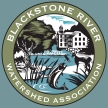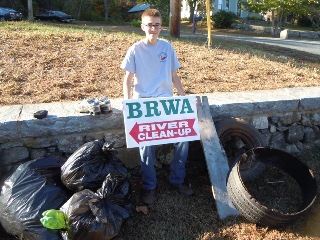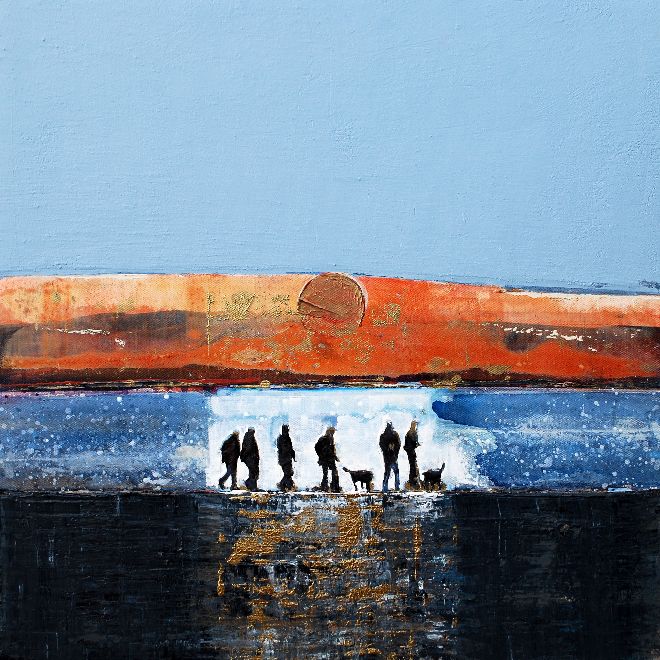|
Blackstone River Watershed Association
|
|
|
BRWA NEWS
|
EarthDay Cleanup: Coming to a Waterbody Near You!
The BRWA's annual Earthday Cleanup is citizen stewardship at its finest.
Families, scouts, churches, local businesses, and other river advocates
pitch in each year to do their part in restoring the Blackstone River and
its watershed.
Do you know a pond, stream, wetland, or stretch of the river that is
trashed? Please send us the details and a photo if possible. Can you
spare a few hours on Sunday April 17th for this worthy cause? If so, sign
up at events@thebrwa.org.
The BRWA and Alternatives Unlimited, Inc. will organize the cleanup and
Clean and Green Fair from 1- 3 p.m at the River Bend Farm Visitor Center in
Uxbridge. Cleanup supplies and signs can be provided ahead of time to
volunteers working at sites in other towns from Auburn to Blackstone. We
also need volunteers who can assist in waterways with canoes. With your
help, we can continue to make the Blackstone healthier!
top
|
|
CALENDAR OF EVENTS
|
February 11th is National Make a New Friend Day.
Feel free to extend the celebration for the entire year. Whether hiking a
trail, networking at the office, standing in line at the airport, or browsing
a farmers market, stop and introduce yourself. And while you're at it, share
with your new friend an interesting fact about the Blackstone. You might
just create an advocate!
|
| 2/14 |
Cornell's annual Great Backyard Bird Count
(http://gbbc.birdcount.org/)
2:00 p.m. West Hill Dam. 518 East Hartford Avenue, Uxbridge. Meet at the dam. Info: 508-278-2511.
|
| 2/14 |
Healthy Heart Valentine's Day Hike. Mass DCR. Purgatory Chasm.
1:00 - 2:00 p.m. 1 mile walk; leashed pets ok. 198 Purgatory Rd, Sutton. Info: 508-769-7011
|
| 2/15 |
Maple Sugarmakers Weather Watch.Blackstone River and Canal State
Heritage Park. 11:00 a.m. - noon. River Bend Farm Visitor Center. 287 Oak Street, Uxbridge.
Info: 508-278-7604.
|
| 2/17 |
Blackstone River Watershed Council Monthly Meeting.
6:30pm - 8:30pm. Lincoln RI.
info
|
| 2/25 |
BRWA Board Meeting. 6:45 p.m. to 8:00 p.m. 287 Oak St., Uxbridge.
info
|
| 3/5 |
Blackstone River Coalition’s Annual Water Quality Monitoring Summit.
9:15 a.m. -12:00 p.m. Hopedale Community House, 43 Hope St, Hopedale, MA.
Info: Susan Thomas, acadia94@verizon.net
or 508-839-9488.
|
| 3/7 |
Trout Unlimited Central Mass Chapter Monthly Meeting.
6:00 -9:00 p.m. Auburn Sportsman's Club. 50 Elm Street, Auburn, MA.
info
|
| 3/19 |
2016 RI Land and Water Conservation Summit.
7:45 a.m. - 4:00 p.m. URI, Kingson RI.
info
|
| 4/17 |
BRWA's Annual EarthDay Cleanup. 1:00 - 3:00 p.m. River Bend Farm Visitor Center,
Uxbridge and sites throughout the watershed. See above for details.
|
top
|
THINK GLOBAL, ACT LOCAL
|
More about MS4
The January newsletter discussed how the BRWA and other water advocates are
asking the State to sign on to the pending MS4 permit. Here are some details
about the stormwater permit. See future newsletters for additional background info.
- Phase 2 permit covers municipalities under 100,000 like Grafton, Uxbridge, and Blackstone.
- 240 Massachusetts towns currently operating under the 2003 permit,
which is 8 years overdue for reauthorization.
- Permit calls for six pollution control measures including public
education/outreach, public participation/involvement, illicit discharge
detection/elimination, construction site runoff control, post construction
runoff control, and pollution prevention/good housekeeping.
- Mass Stormwater Handbook adopted 1997/revised 2007, needs updating to
reflect current scientific understanding of groundwater recharge and
advances in low impact development.
- In permit debate, EPA relies more on water quality standards whereas
Mass DEP focuses more on best management practices.
top
|
Mass Wildlife Speaker Series
As part of its 150th anniversary celebration, Mass
Wildlife is offering a series of free talks on a wide range of topics. This
speaker series, which is free and open to the public, will be held at the
Westborough headquarters at 1 Rabbit Hill Road.
On February 18th, there will be a talk entitled Wildlife Journey in Time:
The History of Wildlife in Massachusetts. Learn about the Division of
Fisheries and Wildlife's role in fish and wildlife conservation and how you
can play a part in it. The March 1st talk is Amphibian and Vernal Pool
Conservation Needs You. This is the perfect introduction for those who want
to get involved and contribute to monitoring projects this spring and summer.
Both talks begin at 7:00 p.m. For more info on the complete series,
contact: 508-389-6300 or Mass.com/MassWildlife150.
top
|
Victory for Conservation Easements
One of our best tools for protecting valuable land and
water resources is the tax incentive provided to landowners who place
conservation easements on their property. Last December, President Obama
signed off on a law making this program permanent. Since its introduction in
2006, it has been responsible for the protection of millions of acres
throughout the country. These lands can still be used for agriculture and
recreation, and they continue to supply taxes to local communities. The
bipartisan support for the recent law clearly demonstrates how the incentive program
is a win-win scenario for people and natural resources. For more information:
http://www.landtrustalliance.org/taxonomy/term/121
top
|
|
FAMILY FOCUS
|
Wetland in a Pan
One way to teach children about nature is to let
them build models. Even something as complex as a wetland can be
demonstrated with some simple materials and creativity.
- Start with a metal or aluminum pan (9"x13" or so).
- Place modeling clay on one of the short sides of the pan, angling it down toward the bottom. This will represent uplands.
- Place a strip of sponge or floral oasis across the next portion of the pan, making sure it is snug against the bottom and sides of the pan. This will represent wetlands.
- Place some blue construction paper at the final third of the pan to represent a pond, river, or other water body.
- Use sticks, pine cones, or flowers to "vegetate" the uplands.
- Paint some q-tips green with brown tips and place them in the wetlands to represent cattails and other wetlands plants. You can also use pine needles.
- Cut out some images of herons, otters, and dragonflies. Tape them to toothpicks and place them in the wetland.
- Cut out some images of fish, tadpoles, crayfish, or other aquatic animals and tape them to the blue paper.
- Sprinkle some loose dirt or cake sprinkles on the "uplands".
- Using a spray bottle, make it "rain" on the uplands until you see the dirt/sprinkles being washed into the wetlands.
- Observe how the "wetlands" soak up the water and "pollutants". Keep adding water until the wetland is saturated and starts releasing excess water into the waterbody.
- Predict what will happen if the wetland is damaged or removed. Remove part or all of it and observe how the water carries the dirt and pollution into the waterbody.
- Discuss what happens to the animals living in a polluted waterbody and how it might affect people living nearby.
Based on "A Wetland in a Pan: from WOW! The Wonders of Wetlands.
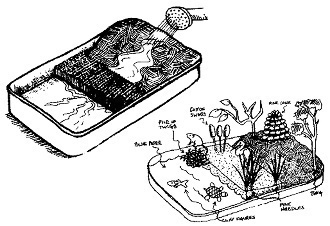
|
top
|
|
BE GREEN
|
Planning for the Harvest
 Nothing makes you feel like a good earth steward like
nurturing your own vegetable garden. And even though it's February, this is
the ideal time to start planning for a successful harvest! If you have an
existing garden, start by reviewing what worked in the past and what needs
tweaking this year. Then grab some graph paper and map it out!
Nothing makes you feel like a good earth steward like
nurturing your own vegetable garden. And even though it's February, this is
the ideal time to start planning for a successful harvest! If you have an
existing garden, start by reviewing what worked in the past and what needs
tweaking this year. Then grab some graph paper and map it out!
- Site selection is critical. Ideally you have 6-8 hours of direct
sunshine. Think about winter trees leafing out when you choose a spot.
Also consider where compost piles, water supply, and equipment are located
to be more efficient. Consider purchasing a rain barrel to capture and
reuse roof run-off.
- Consider having multiple plots or raised beds to allow rotation of
crops from year to year. This reduces problems with disease and microbes.
The four major groupings include legumes, root veggies, cabbage/cauliflower
family, and "other" (corn, squash, celery, tomatoes).
- Determine if your soil texture leans more toward clay, silt, or sand.
Balance it out as needed or choose plants that have a preference for a
soil type.
- Have your soil pH tested with a home kit, at a local garden center, or
by an extension service. Amend as needed to achieve a level of 6.5 that
is preferred by most vegetables.
- "Top dress" with organic material (compost or other locally available
free sources) and remove early spring weeds before planting begins. Some
experts advise not to turn over the soil as that encourages weeds and
breaks down the complex soil ecology.
- Order seeds early enough if you plan to start germination indoors.
- Early veggies include peas, leeks, beets, and greens.
- Don't forget to plan for garden features that encourage pollination
and natural pest control like bird and bat boxes and host plants.
Photo by Susan Thomas
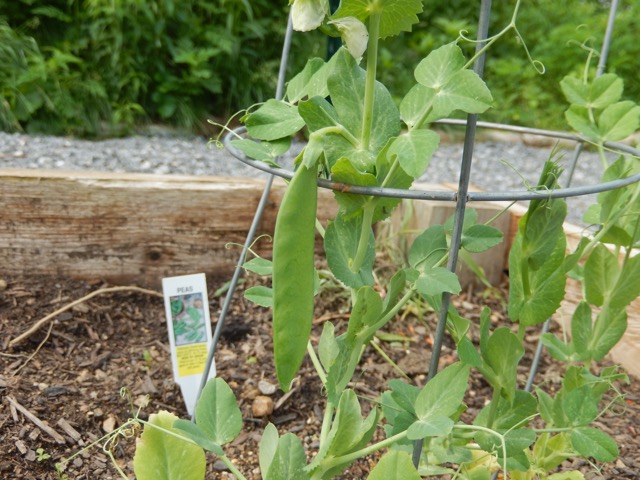
|
top
|
|
REFLECTIONS
|
“It is not half so important to know as to feel.” Rachel Carson
This painting highlights the core elements of our world: the sky, the water,
the land, and us. It can be easy to forget that everything that happens
around us originates from these elements and our interaction with them. We
should all strive for those interactions to be harmonious.
top
|
Views & opinions expressed in linked websites do not necessarily
state or reflect those of the BRWA.
|
|
Your input is crucial to this eNewsletter. If you have a local
watershed-related story, information of interest to our subscribers, or
comments about this publication, drop an email to the editor.
The Blackstone River Watershed Association (BRWA) has a mission to
engage, educate, and advocate for improved water quality in the Blackstone
River Watershed; its objectives are to:
- Engage the public in watershed stewardship activities,
- Educate members, supporters, and residents on watershed protection strategies, and
- Advocate to local residents, community leaders, non-profit partners, and
state regulators to take actions that will help to ensure our waterways continue
to provide healthy habitat and enjoyable recreational opportunities.
The BRWA eNewsletter is published monthly by the Blackstone River Watershed
Association. BRWA is a 501(c)(3) non-profit organization.
Editor: Susan Thomas susan.thomas@thebrwa.org
Mailing address: BRWA, 271 Oak Street Uxbridge, MA 01569
Phone: 508-278-5200 Web: www.thebrwa.org
Click here for back issues.
|
|
